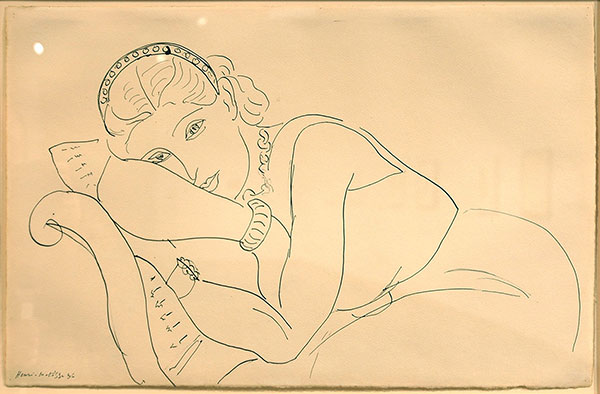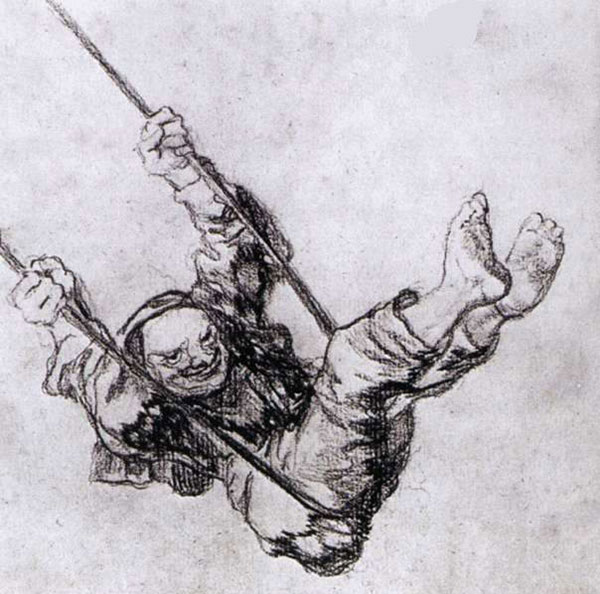
Claire Elizabeth Barratt in Human Clay, a motion sculpture movement installation by Cilla Vee Life Arts, presented by Chashama, 2004, photo by Fred Hatt
One of the most venerable functions of art is to transform the environment, to create a sacred space or a magical moment, to inspire the imagination or to open the mind to contemplate mysteries. This may be the impulse behind the painted caves of the Ice Age, and it is why places to pray and places to play are often designed as majestic spaces, or filled with images or music, beautiful light, fine materials, costumed performers, ritualized actions, and sensual delights such as incense and candles.
It is a common conceit of modern society to think we’re past all that, or to segregate such things to churches and carnivals and festivals, to dismiss them as kid stuff or god stuff, therefore not real. The paradigm for the contemporary art gallery is the industrial space with plain white walls and bright track lighting, the better to display work that is formally reductionist, coldly conceptual, or ironic, and of course, always very, very expensive.
Naturally there’s a counter-movement. I’ve always been drawn to alternatives to the white box gallery, and have mostly shown work in unusual venues or as part of collaborative multimedia happenings. One of the organizers of such events is Claire Elizabeth Barratt. She’s a dancer, performance artist, and installation artist, but I’d say her real art form is to bring diverse artists together in loose collaborative events that aim to create enchanted spaces. Under the banner of Cilla Vee – Life Arts, she’s produced countless events in a wide variety of environments.
In June, 2004 and again in August, 2005, I created live ink drawings as part of Human Clay, a production Claire calls a “Motion Sculpture Movement Installation”, melding elements of visual art, dance, and live music, all improvised in the moment. It was what some people call an “ambient performance.” A variant on “ambient music“, this term generally describes an event with a designated run time but no beginning, middle or end, so the audience can come and go at will, taking a momentary taste or settling into the experience for as long as they wish.
Human Clay was done in one of the 42nd Street storefront window spaces hosted by the NYC arts organization Chashama. (I’ve written previously about solo drawing performances I did in Chashama’s windows.) In this space, people could see the performance through the window from the public sidewalk, or they could come in and sit down on the opposite side of the stage, with the city street as backdrop. I believe the performance went on for four or five hours each time it was done.
In this post I’m presenting pictures of all the drawings I made during the 2004 and 2005 performances of Human Clay, interspersed with photos of the 2004 performance that I took during breaks from drawing.

Hisayasu Takashio, sculptor, in Human Clay, a motion sculpture movement installation by Cilla Vee Life Arts, presented by Chashama, 2004, photo by Fred Hatt
Claire’s description of Human Clay calls it “a constant shifting of landscapes composed of human, rope and twisted tree branch sculptures. The sculptor fervently constructs, molds and forms these elements in a race against time before they give in to gravity and gradually melt towards the ground.” The sculptor, shown above, is Brooklyn-based Hisayasu Takashio.

Fred Hatt drawing in Human Clay, a motion sculpture movement installation by Cilla Vee Life Arts, presented by Chashama, 2005, photo by Marc Dale
While the sculptor was moving his dancers and objects into ever-shifting arrangements, I was using them as models for brush sketches. I had hung long strips of white paper throughout the interior of the space, and over the few hours that the performance went on, I recorded my impressions of the fleeting tableaux with my dancing brush. As each pose was set, it would only hold for a few seconds before heaviness or the impulse to move caused the fragile structure to collapse, so I had to use my quick-drawing skills. There’s a shot of me drawing, above, and the finished panel below. As you can see, the drawings are quite large, so I could move the brush freely, and didn’t have to worry about crowding the paper too quickly.

Drama, left panel, ink drawing by Fred Hatt from Human Clay performance, 2005
Normally, a sculptor’s work is long-lasting, but this sculptor was working with living bodies and transient arrangements. It was up to me to capture what I could, covering the walls with my linear impressions of the slow, shifting sands of the dance.

Image from Human Clay, a motion sculpture movement installation by Cilla Vee Life Arts, presented by Chashama, 2004, photo by Fred Hatt
The ritual of continuous, slow-paced resculpting was sustained by quiet, trancy music. Marianne Giosa, a soulful trumpeter, multi-instrumentalist and dancer was performing for the 2004 version.

Drama, right panel, ink drawing by Fred Hatt from Human Clay performance, 2005
The elements the sculptor had to work with were ropes: tough but limp, branches: stiff and serpentine, and living human bodies that could combine all those qualities.

Image from Human Clay, a motion sculpture movement installation by Cilla Vee Life Arts, presented by Chashama, 2004, photo by Fred Hatt
The performances maintained the same pace and substance for the full duration – no development, no narrative. But when I look at the drawings, I can’t help but see dramatic events. There’s no clear plotline you can read. It’s like looking at the illustrations to a story book in a language you don’t understand. The imagination is stimulated to fill in the blanks.

Youth, 2 panels, ink drawing by Fred Hatt from Human Clay performance, 2004
The dancers were smeared with clay, which gave them a crusty patina like cracked plaster. Some of Claire’s other Motion Sculpture events are wildly colorful. This one is austere, but with a strong dose of nature’s chaotic textures.

Image from Human Clay, a motion sculpture movement installation by Cilla Vee Life Arts, presented by Chashama, 2004, photo by Fred Hatt
The sticks and ropes added simple but powerful recurring visual motifs to the ever-changing compositions. Look at the crossed twisty branches above, and in the drawing below, and in the photo below that.

Altar, ink drawing by Fred Hatt from Human Clay performance, 2005
To me the branches evoke the writhing life force, and when the dancers are crossed and suspended and tangled up, my imagination sees sacrifice and struggle.

Image from Human Clay, a motion sculpture movement installation by Cilla Vee Life Arts, presented by Chashama, 2004, photo by Fred Hatt
I had never met the sculptor before these performances, but Claire must have known his wriggly lines and mine would work in harmony!

Fire, ink drawing by Fred Hatt from Human Clay performance, 2005
Always slow, as if in a trance, there is constant change. A journey through a forest.

Image from Human Clay, a motion sculpture movement installation by Cilla Vee Life Arts, presented by Chashama, 2004, photo by Fred Hatt
Gestures and attitudes, all the expressions of the human body.

Gesticulate, ink drawing by Fred Hatt from Human Clay performance, 2005
Contact, sensuality, struggle.

Image from Human Clay, a motion sculpture movement installation by Cilla Vee Life Arts, presented by Chashama, 2004, photo by Fred Hatt
Spreading out, rising up, sinking down, curling inward.

Relation, 3 panels, ink drawing by Fred Hatt from Human Clay performance, 2004
Pose of a hero, a warrior.

Image from Human Clay, a motion sculpture movement installation by Cilla Vee Life Arts, presented by Chashama, 2004, photo by Fred Hatt
Strife, stress, conflict.

Hitting, ink drawing by Fred Hatt from Human Clay performance, 2005
Pulling apart and holding together.

Image from Human Clay, a motion sculpture movement installation by Cilla Vee Life Arts, presented by Chashama, 2004, photo by Fred Hatt
Stride, strive, strike.

Arise, ink drawing by Fred Hatt from Human Clay performance, 2005
Angle, angel, anger, danger.

Image from Human Clay, a motion sculpture movement installation by Cilla Vee Life Arts, presented by Chashama, 2004, photo by Fred Hatt
Arise, arouse, arrows, errors.

Victory, 3 panels, ink drawing by Fred Hatt from Human Clay performance, 2004
Breathe, bathe, incline, align.

Image from Human Clay, a motion sculpture movement installation by Cilla Vee Life Arts, presented by Chashama, 2004, photo by Fred Hatt
Allay, ally, alloy.

Dance, ink drawing by Fred Hatt from Human Clay performance, 2005
In balance, imbalance.

Image from Human Clay, a motion sculpture movement installation by Cilla Vee Life Arts, presented by Chashama, 2004, photo by Fred Hatt
Every character finds its extreme expression, and its norm.

Individuation, left panel, ink drawing by Fred Hatt from Human Clay performance, 2005
Keep the clay wet, to keep it supple.

Image from Human Clay, a motion sculpture movement installation by Cilla Vee Life Arts, presented by Chashama, 2004, photo by Fred Hatt
Curl, curve, curse, cure.

Individuation, right panel, ink drawing by Fred Hatt from Human Clay performance, 2005
Everything tends to come to rest.

Image from Human Clay, a motion sculpture movement installation by Cilla Vee Life Arts, presented by Chashama, 2004, photo by Fred Hatt
Every body plays many roles as the endless dance goes on.

Fold, 2 panels, ink drawing by Fred Hatt from Human Clay performance, 2004
We are the stuff of stars and of earth. We shine and we sink down, and new life is always emerging from death.

Image from Human Clay, a motion sculpture movement installation by Cilla Vee Life Arts, presented by Chashama, 2004, photo by Fred Hatto
This ritual has no story, no structure, no destination. It goes on and on, and when the time comes, it ends. In the meantime, it evokes every quality of life, but there is no definitive meaning. This is my experience of this piece, from my viewpoint as a person who looks and loves and draws. I’m sure Claire, the sculptor, the dancers, and the musicians all have their own rich and very personal experience of the piece.

Encounter, 2 horizontal panels joined, ink drawing by Fred Hatt from Human Clay performance, 2004
I wonder how the audience experienced it. I imagine there was quite a range, from the passerby who thinks “Look at the weirdos” to the person who gets sucked into the trance and comes in to sit rapt for an hour or more. As for me, I want to do more things like this.

Audience on the street watching Human Clay, a motion sculpture movement installation by Cilla Vee Life Arts, presented by Chashama, 2004, photo by Fred Hatt
Here are the credits for the performance: Human Clay with sculptor Hisayasu Takashio, action gesture drawing by Fred Hatt, sound by Marianne Giosa, Judith Berkson and/or Sabine Arnaud, presented at Chashama 42nd Street Storefront, NYC, June 2004 & August 2005. Dancers in 2004 (those pictured in these photos) were Claire Elizabeth Barratt, Pedro Jimenez, Jill Frere, and Kazu Kulken. Dancers in 2005 were Claire Elizabeth Barratt, Maria Pirone, Jill Frere, and Judy Canestrelli.
The drawings from 2004 are sumi ink on paper 36″ wide, varying lengths. The 2005 drawings are sumi ink on paper 48″ wide, also varying lengths.
See video excerpts from these performances here.



























































































































